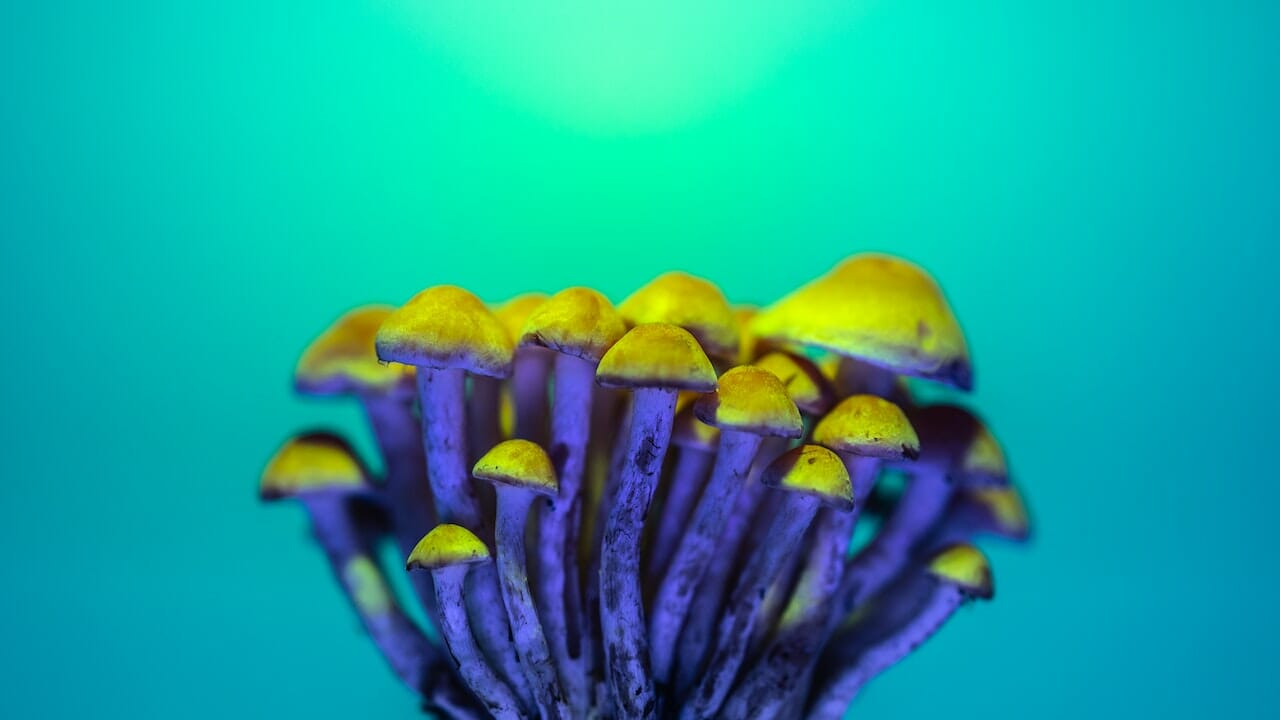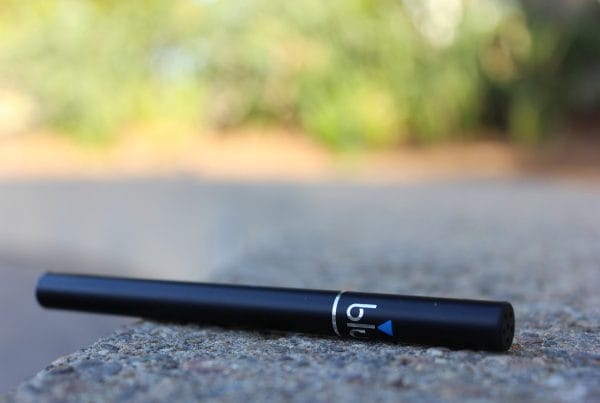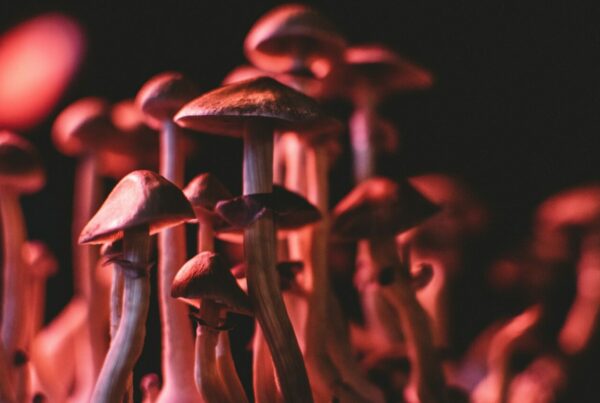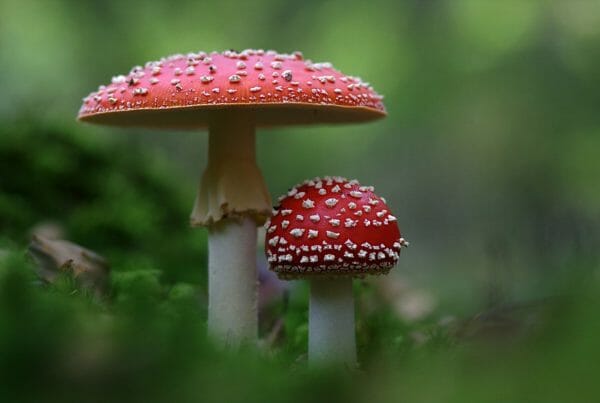Lysergic acid diethylamide (LSD) is a powerful hallucinogen that has been widely studied. Initially recognized for its recreational use, LSD is now seen as a psychoactive substance that could potentially offer mental health benefits. This shift in perception has paved the way for further exploration into the effects of LSD, particularly in more consumable forms like LSD edibles.
Key Takeaways:
- LSD, a powerful hallucinogen, originates from the ergot fungus.
- Like psilocybin, LSD interacts with the 5-HT2A receptors.
- LSD can induce visual alterations, mood swings, ego dissolution, and pseudo-hallucinations.

Demystifying LSD
LSD is an exceptionally potent hallucinogen that can dramatically alter one’s perception of reality and significantly distort the senses. It is derived from “ergot,” a fungus that grows on rye and other grains.
At a molecular level, LSD belongs to the ergoline family and is a complex chemical. It consists of a hexahydroindole group and a quinoline group (lysergic acid), both of which are bicyclic. The name ‘Lysergic Acid Diethylamide’ is derived from the functional group attached to its core structure. LSD’s structure is akin to other ergoline alkaloids, such as ergotamine, present in the ergot fungus Claviceps purpurea, and the neurotransmitter serotonin.
The Effects of LSD
Upon consumption, LSD enters the brain and induces chemical reactions that can last for several hours. The following are some short-term effects LSD may induce:
- Unpredictable mood fluctuations
- Distorted perception
- Feelings of dizziness
- Decreased appetite
- Impaired motor control
The Advantages What are the Benefits of Using LSD?
LSD offers a range of benefits, chiefly determined by the dose ingested. Most studies highlight the benefits associated with consuming small amounts of this psychedelic substance. In the following sections, we explore the potential positive outcomes of LSD use.
Neuronal Growth and Pain Management
Researchers at Maastricht University have discovered that a single microdose of LSD can provide pain relief lasting at least five hours, sometimes even longer.
In a Cold Pressor Test, where participants immerse their hands in water at 3°C (37.4°F) to their tolerance limit, those who took 20 mg of LSD were able to endure the cold for 20% longer than the others. They also reported a decrease in pain and discomfort.
Furthermore, LSD can facilitate the development and growth of the brain’s 86 billion neurons. Moderate doses of LSD, ranging from 5 to 20 ug, raise the BDNF levels in blood plasma. This is crucial as mood disorders like depression, often associated with neuroplasticity issues, might be alleviated due to LSD’s beneficial impact on neuronal health.
Mental Health Enhancement
Dr. Robin Carhart-Harris from Imperial College London developed the entropic brain theory. This theory proposes that mental health disorders originate from rigid thought patterns, upheld by an overly active default mode network (DMN). Psychedelic substances like LSD can interfere with the DMN, increase brain entropy, and promote the dissolution of harmful neural pathways while fostering the creation of beneficial ones.
A study involving over 1,000 participants microdosing LSD showed a decrease in depression symptoms. Another large-scale study indicated a decline in negative emotions and destructive attitudes, coupled with an increase in open-mindedness and cognition.
Addiction Treatment
A meta-analysis of randomized-controlled trials involving LSD in psychiatry concluded that it is most effective in treating alcohol addiction. This conclusion is further substantiated by the positive results experienced by numerous patients treated for alcoholism by Humphrey Osmond and at the Spring Grove Hospital Centre in the 1950s and 1960s.
Easing Anxiety and Depression in End-of-Life Situations
Dr. Peter Gasser’s research has shown that LSD-assisted psychotherapy can assist terminally ill cancer patients in reducing their anxiety about their impending death. This treatment also enhanced their overall perception of life quality. Currently, a Phase 2 trial is underway to further explore the potential benefits of LSD therapy for depression.
Deciphering LSD Edibles: Their Ingredients and How They’re Made
LSD edibles are a type of food or drink product that incorporate the hallucinogenic compound, LSD. The forms of these edibles can vary widely, from chocolates, candies, and baked goods to more distinct items like LSD-infused mints.
Components
- LSD: This is the active ingredient that triggers hallucinogenic effects. It’s carefully measured and incorporated into the edible.
- Edible Base: The LSD is usually dissolved or infused into a consumable medium such as a gummy, candy, or sugar cube. These mediums act as the delivery system for the hallucinogenic compound.
- Flavouring and Ingredients: The specific edible product may contain flavourings, sweeteners, and other ingredients to enhance taste and texture. These can include natural or artificial flavours, colours, and sweeteners, and can vary greatly.
Manufacturing Process:
- LSD Synthesis: The first step involves the chemical production of LSD. This procedure requires a deep understanding of organic chemistry and access to necessary chemicals, equipment, and a suitable laboratory environment.
- Liquid Formulation: Once the LSD is synthesized, it’s typically converted into a liquid form by dissolving it in a solvent. This liquid serves as a concentrated LSD solution.
- Infusion: The liquid LSD is then infused into an edible medium such as gummy candies, sugar cubes, or blotter paper. The infused medium absorbs the liquid, allowing the LSD to be consumed orally.
Experiencing the Psychedelic Impact of Psychoactive Compounds in LSD Edibles
LSD triggers intense visual effects. Colours appear more vibrant, objects may seem to be encircled by halos or rainbows, and shapes can distort. Regardless of whether the eyes are open or closed, users may see
LSD, or lysergic acid diethylamide, can significantly alter one’s perception of self and the environment. Its effects can induce different mental states, making thoughts appear more clear and meaningful, or alternatively, disjointed and illogical. It can also affect sensory perception, changing how time, distance, and body image are experienced. The boundary between self and the external world may become indistinct. Some users have reported sensory crossover, such as seeing music or hearing colours.
Suggested LSD Products
There is a vast array of LSD-infused edibles available. However, it is paramount to purchase from a trustworthy dispensary to ensure that the edibles contain LSD and not other substances like PCP, ecstasy, or ketamine.
Deadhead Chemist – LSD Infused Gummies
Deadhead Chemist offers LSD-infused edibles, each containing 100 micrograms (ug) of LSD, in various flavours. Each pack contains a single gummy, which has shown promise in helping individuals with conditions such as obsessive-compulsive disorder (OCD), post-traumatic stress disorder (PTSD), alcoholism, depression, and cluster headaches.
Deadhead Chemist – Mint Tea
Deadhead Chemist’s raspberry mint tea provides a tastier and more enjoyable way to experience the effects of LSD. LSD and other psychedelics imitate the serotonin neurotransmitter, enhancing the brain’s flow state.
Earthly Delights – Candy Flips
Candy flipping emerged during the rave culture in the late 1980s. Today, both thrill-seekers and party-goers continue to enjoy the magnificent combination of these two potent substances. Users frequently experience intense feelings of love and interconnectedness, complemented by stunning visual effects such as intensified colours, morphing objects, and complex geometric patterns.
Concluding Remarks
LSD has a rich history of inducing transformative experiences. With the rise in scientific knowledge about this substance, its popularity has soared, introducing the advent of LSD-infused edibles as a new way for individuals to partake. These delectable delights have become a trend.
Indulge in LSD in a safe and enjoyable way with carefully measured doses.
Magic Mushrooms Quebec Canada, Canada’s leading supplier of high-grade shrooms online, brings you a vast selection of LSD-laced edibles and cannabis products. Explore our range at your convenience, add your favorite items to your cart, and unwind at home while we handle the delivery. We also offer an extensive array of psilocybin shrooms, edibles, drinks, and capsules for your benefit. Be sure to check out our LSD delivery page for additional details!
Frequently Asked Questions
What sets LSD apart from psilocybin?
FEATURES LSD PSILOCYBIN Source Semi-synthetic chemical compound Occurs naturally in fungi Forms Available Tabs, microdots, liquid, gummies, blotter paper Dried mushrooms, capsules, teas, chocolates Potency Highly powerful, consumed in microgram doses (ug) Varies based on mushroom species and mode of preparation Onset and Duration Quick onset (15-60 minutes), short duration (3-5 hours) Gradual onset (30-60 minutes), moderate duration (4-6 hours)
How can one avoid adverse experiences with LSD?
- Choose Your Setting Wisely
- Prepare Your Mindset
- Start with a Small Dose
- Arrange for a Trip Supervisor
- Create a Peaceful Ambiance
- Use Deep Breathing and Grounding Techniques
- Accept and Let Go
What is the duration of the effects?
The acid’s effects start to show between 30-60 minutes after ingestion. Individuals with a higher sensitivity to psychedelics may begin to experience the effects In roughly 15 minutes, you’ll be able to discern if you’ve ingested acid. The climax of your journey will occur around the third hour of your experience. You may experience a feeling of time slowing down and even hallucinations.
Hold on, it’s not unusual to feel a sense of detachment from reality during this stage. The intense phase lasts between 3 and 5 hours, after which the wind-down phase continues for an additional 3 to 5 hours.
How does LSD interact with the human body?
LSD mainly interacts with the brain’s serotonin system by binding to and activating the 5-HT2A receptor. This interaction initiates a chain of neurochemical and physiological responses. The effects of LSD, which can greatly vary, are influenced by certain factors.
Are there alternative forms of LSD besides edibles?
Yes, LSD is available in a variety of formats. The four primary types of LSD products are blotter paper, liquid solutions, tablets/microdots, and gelatin sheets.
Suggested Readings:
| FEATURES | LSD | PSILOCYBIN |
| Source | Semi-synthetic chemical compound | Occurs naturally in fungi |
| Forms Available | Tabs, microdots, liquid, gummies, blotter paper | Dried mushrooms, capsules, teas, chocolates |
| Potency | Highly powerful, consumed in microgram doses (ug) | Varies based on mushroom species and mode of preparation |
| Onset and Duration | Quick onset (15-60 minutes), short duration (3-5 hours) | Gradual onset (30-60 minutes), moderate duration (4-6 hours) |





